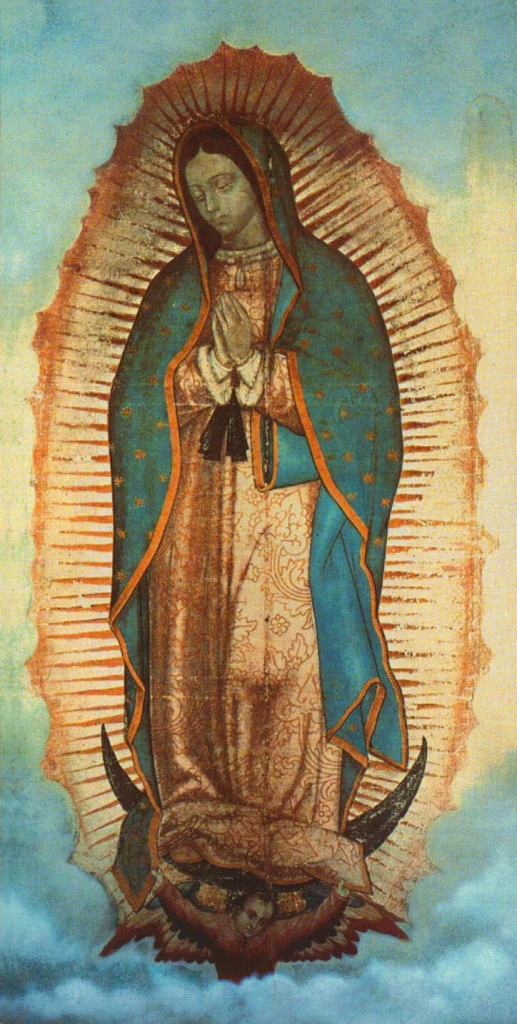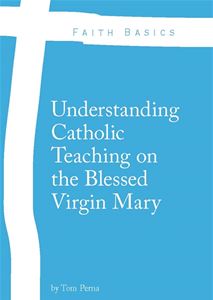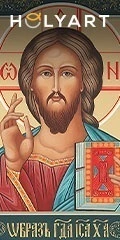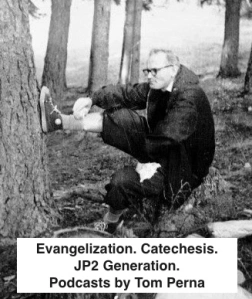If you are a regular reader to this series on Mary, I imagine you are as happy as I am to find out that our new Papa has a great devotion to the Blessed Mother. So great is his devotion to her that he prayed for her intercession when he first came out on the loggia of St. Peter’s. On the first day of his Papacy, he visited St. Mary Major in Rome, offered flowers to our Blessed Mother, and stayed to pray for 30 minutes.
If that wasn’t enough for you, you should know that the shield on his papal crest is blue for Mary (from what I heard) and the five-point star on the blue shield is for Mary, the Mother of Christ and the Church as well. Furthermore, the nard on the right is to represent St. Joseph. Wow! Papa Francis is all about the Blessed Mother and the Holy Family as a whole (IHS represents Christ and a Jesuit symbol).
After searching the internet seeking all that I could find on Pope Francis (Cardinal Mario Jorge Bergoglio, SJ), my former academic advisor and professor, Scott Hahn, posted this fantastic website on Facebook with many of the now Pope Francis’ words – Ad Majorem Dei Gloriam – Essential Thinking for Reading Catholics. As I read through this blog, I found some great words from then Cardinal Bergoglio on the Mary – the Eucharistic Woman via Blessed John Paul II. Originally, I was going to do some commentary on what he says, but after thinking about it and praying on it, I will just let our new Papa’s words speak for themselves. Hope you enjoy it!
The words below are from – Catechesis of His Eminence Jorge Mario Cardinal Bergoglio, SJ at the 49th International Eucharistic Congress in Quebec. Red emphasis is mine.
“To better contemplate this mystery of the Covenant, we must be centered on Mary. Once again, we are aided by the vision of John Paul II, who invites to enter “In the school of Mary, Eucharistic woman.”:
 “If we wish to discover, in all its richness, the intimate relationship that unites Church and Eucharist, we cannot forget Mary, Mother and model of the Church […] Effectively, Mary can guide us towards this Blessed Sacrament because she has a profound relationship with it.”
“If we wish to discover, in all its richness, the intimate relationship that unites Church and Eucharist, we cannot forget Mary, Mother and model of the Church […] Effectively, Mary can guide us towards this Blessed Sacrament because she has a profound relationship with it.”
In the manner of the Russian nesting dolls where the larger figure includes within itself others which are smaller but, essentially identical, let us proceed directly to the “tiniest,” to our Lady, to see how what is manifested within her – the mystery of the Covenant that allows the gift of God to be accepted and communicated for the life of the world – is shown in the universal Church and in each soul. We follow the dictum of the Fathers according to which, with different shadings, “what is said universally of the Church, is said in a special way of Mary and individually of each faithful soul.”
In the relationship between Mary and the Eucharist we can see three images that reveal to us characteristics of the Covenant that we can later apply to the universal Church and to our own soul in particular.
The first Eucharistic image of Mary shows her to us as “included” in the Church, which at the same time, mysteriously, she includes in her smallness. The Pope makes a note of the “participation” of Mary in the Eucharist of the first community:
“She was with the Apostles, ‘with one mind in prayer’ (Acts 1:14), in the first community gathered after the Ascension in wait of Pentecost. This presence of hers, certainly, could not be lacking in the Eucharistic celebrations of the faithful of the first Christian generation, assiduous ‘in the breaking of bread’ (Acts 2:42).”
The community of Apostles perseveres in prayer with one spirit “in company” with Mary:
“And when they were come in, they went up into an upper room, where abode Peter and John, James and Andrew, Philip and Thomas, Bartholomew and Matthew, James of Alpheus, and Simon Zealot, and Jude the brother of James. All these were persevering with one mind in prayer with the women, and Mary the mother of Jesus…” (Acts 1:13-14).
The mystery of the Covenant between God and men is a mystery of “company,” of sharing bread, of “being with” others, in family, at table, mystery of fellowship continued. This company is appropriate to the pedagogy of the Lord, which transforms each person as with the disciples of Emmaus, as He accompanies them on the road.”
The second Eucharistic image of Mary shows us the bride who places all her confidence in her Spouse. John Paul II accentuates the “interior Eucharistic attitude” with which Mary lives all her life, attitude that correctly defines “abandoning to the Word.” Mary concentrates within herself all “doing” with respect to the Word. The abandonment implies a “not doing,” appropriate of someone fully disposed to receive a gift – the “be it done to me according to thy Word.” The abandonment also implies a “doing,” appropriate of someone who gives herself without calculation or measure and exhorts others to do likewise –“…do whatever he tells you.”
For the Church and for each one of us:
“Living in the Eucharist the memorial of the death of Christ implies also receiving continually this gift. It signifies taking with us – following the example of John – she who was given to us a Mother. It also means assuming, at the same time, the commitment of conforming ourselves to Christ, learning from His Mother and allowing ourselves to be accompanied by her.”
This total confidence and this obedience in faith makes the Heart of Mary the perfect vessel for the Word to become flesh and to, at its own pace, transform her fully.
The third Eucharistic image of Mary shows us something quite proper to the Covenant that consists in living in anticipation – in hope – what is promise. John Paul makes reference to the mystery of “anticipation,” when he stated:
“Preparing day by day for Calvary, Mary lives a sort of ‘Eucharist anticipation’ one could say, a ‘spiritual communion’ of desire and offering, that culminates in the union with the Son in the Passion and will manifest itself later in the post-Paschal period, in her participation in the Eucharistic celebration, presided by the Apostles, as ‘memorial’ of the passion.”
Desire and self-offering are the two anticipatory attitudes that convert the Church and also each faithful soul into “new wineskins.” By desire and self-offering we become, like Mary, vessels suitable for the Word to take on flesh within us. The humble and hidden presence of the Lord in Mary, in the Church and in each soul, radiates light and hope to the world. John Paul expresses this beautifully, speaking of the Visitation:
“‘And blessed art thou that hast believed’ (Lk 1:45): Mary has anticipated, in the mystery of the Incarnation, the Eucharistic faith of the Church. When, in the Visitation, she carries within her the Word made flesh, she becomes, in a way, a ‘tabernacle’ – the first ‘tabernacle’ in history – where the Son of God, still invisible to the eyes of men, is offered for the adoration by Elizabeth, as ‘radiating’ light through the eyes and the voice of Mary.”
Categories: Mariology, Pope Francis










